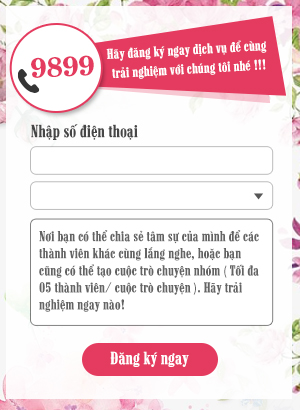The Lucky Iron Fish - Phần 1
Chủ đề nghe Tiếng Anh của chúng ta ngày hôm nay có tựa đề là: The Lucky Iron Fish nghĩa là con cá sắt may mắn.
Chào các thính giả yêu mến của chương trình Học Tiếng Anh qua các chủ đề của chương trình học tiếng anh cùng Radiome. Mình là Diệu Hoa.
Chủ đề nghe Tiếng Anh của chúng ta ngày hôm nay có tựa đề là: The Lucky Iron Fish nghĩa là con cá sắt may mắn.
Vì bài nghe khá dài nên mình sẽ tách làm hai phần để các bạn dễ dàng theo dõi hơn nhé!
Các bạn cùng chú ý lắng nghe với tiết tấu chậm rãi của chương trình Spotlight nhé. Note lại những từ bạn nghe chưa rõ và xem lại ở bản text để làm phong phú thêm vốn từ vựng của mình nhé!
Voice 1
Welcome to Spotlight. I’m Colin Lowther.
Voice 2
And I’m Liz Waid. Spotlight uses a special English method of broadcasting. It is easier for people to understand, no matter where in the world they live.
Voice 1
In a village in Cambodia a mother prepares food for her family. She boils some water in a big round cooking pot. She washes a small fish. Then she puts it in the boiling water. After ten minutes she removes the fish from the pot. Her family will not eat this fish. She puts other food into the pot to cook for her family.
Voice 2
But what about the fish the mother took out of the pot? The family will not eat it. This fish is not food. It is made from iron metal. It is about 7.5 centimetres long and weighs 200 grams. The fish is smiling. The mother and her family like the fish. They call it their Lucky Iron Fish.
Voice 1
Thousands of families in Cambodia have a Lucky Iron Fish. And like this mother, they all put their fish into their cooking water. Today’s Spotlight is on the Lucky Iron Fish.
Voice 2
Christopher Charles studied Health Science at a university in Canada. When he finished his degree, he went to Cambodia. Charles lived in a small village in the country. His job was to treat particular infections. He also studied the health condition anaemia.
Voice 1
Anaemia is a serious condition. People with anaemia do not have enough iron in their bodies. They are iron deficient. People who have anemia are often very tired and lack energy. Anaemia makes people more likely to be sick or get an infection. Anaemia can damage the physical and mental development of children. If pregnant women are not treated, their babies can be born too early and die. If a new mother has anemia, she has an increased risk of dying when her baby is born.
Voice 2
Charles did not know how common anaemia was in Cambodia. But every place he went, he saw evidence of it. In a TED talk, he said:
Voice 3
‘Everywhere I went people were lying down. They were lying out of the heat of the sun. No-one had any energy. No energy to work. No energy to play. No energy to learn.’

Voice 1
As part of his study, Charles did blood tests on many people. He discovered something shocking. About ninety [90] per cent of women and children had anaemia. Charles had discovered a very big problem. He knew he could not leave Cambodia. He decided to stay and find a solution.
Voice 2
Charles knew that iron medicine is the usual treatment for anaemia. But iron medicine costs too much money. Charles wanted a solution that cost less money. It also had to be easy for people to use.
Voice 1
Research shows that cooking with iron pots could help. The iron pot would release iron into every meal. But Charles knew this idea would not work in Cambodia. Iron pots are heavy and cost too much money. Also, in Cambodia people often leave food in their cooking pots at night. Food goes bad if it is left in an iron pot. So Charles decided to try something different. He added a metal bar made of iron to a cooking pot. The iron bar worked. But people did not cook with it.
Voice 3
‘It did not cost much. It did release lots of iron. But there were huge problems with it. Everywhere I went different families had found some use for it. Just not in the cooking pots. People were using it as a door stop. People used it to hold down papers. Someone even used it to support a table with a broken leg.’
Phần 1 của bài nghe hôm nay tạm dừng ở đây. Các bạn chú ý và theo dõi phần 2 ở những bài học tiếp sau nhé! Cảm ơn các bạn.
Global Peace Index - Phần 1
Đến với bài học ngày hôm nay, để giúp các bạn nâng cao khả năng nghe hiểu bao gồm từ vựng, cấu trúc câu và giọng địa phương, chúng ta cùng đến với chủ đề hấp dẫn ngày hôm nay. Đó chính là: Global Peace Index.
Global Peace Index - Phần 2
Chủ đề bài học Global Peace Index vẫn đang tiếp tục ngay sau đây. Chúng ta cùng theo dõi luôn nhé!
Making Things Again - Phần 2
Chủ đề bài học Making Things Again vẫn đang tiếp tục ngay sau đây. Chúng ta cùng theo dõi luôn nhé!
Making Things Again - Phần 1
Đến với bài học ngày hôm nay, để giúp các bạn nâng cao khả năng nghe hiểu bao gồm từ vựng, cấu trúc câu và giọng địa phương, chúng ta cùng đến với chủ đề hấp dẫn ngày hôm nay. Đó chính là: Making Things Again.
Helping Small Business in the Philippines - Phần 2
Chủ đề bài học Helping Small Business in the Philippines vẫn đang tiếp tục ngay sau đây. Chúng ta cùng theo dõi luôn nhé!
Never Alone: A Cultural Video Game - Phần 2
Chủ đề bài học Never Alone: A Cultural Video Game vẫn đang tiếp tục ngay sau đây. Chúng ta cùng theo dõi luôn nhé!
Never Alone: A Cultural Video Game - Phần 1
Đến với bài học ngày hôm nay, để giúp các bạn nâng cao khả năng nghe hiểu bao gồm từ vựng, cấu trúc câu và giọng địa phương, chúng ta cùng đến với chủ đề hấp dẫn ngày hôm nay. Đó chính là: Never Alone: A Cultural Video Game.
Teaching in Tents - Phần 2
Chủ đề bài học Teaching in Tents vẫn đang tiếp tục ngay sau đây. Chúng ta cùng theo dõi luôn nhé!
Nghe Nhiều Nhất
-
(157).jpg) Ở nơi làm việc, ai không hiểu được 4 chân...
Ở nơi làm việc, ai không hiểu được 4 chân...
-
 Chỉ có phụ nữ khí chất mới có thể làm...
Chỉ có phụ nữ khí chất mới có thể làm...
-
(127).jpg) 5 nốt ruồi tố đàn ông trăng hoa, dễ thay...
5 nốt ruồi tố đàn ông trăng hoa, dễ thay...
-
 Khi nản chí muốn từ bỏ ước mơ, hãy nhớ...
Khi nản chí muốn từ bỏ ước mơ, hãy nhớ...
-
 Phụ nữ hiện đại thường bị thu hút bởi những...
Phụ nữ hiện đại thường bị thu hút bởi những...
-
(138).jpg) Gia đình có 3 dấu hiệu này, vận may sắp...
Gia đình có 3 dấu hiệu này, vận may sắp...
-
(130).jpg) Muốn thành công, đừng chia sẻ dự định của mình...
Muốn thành công, đừng chia sẻ dự định của mình...
-
.jpg) Người khôn ngoan biết xem nhẹ 2 điều, kẻ khờ...
Người khôn ngoan biết xem nhẹ 2 điều, kẻ khờ...
-
(262).jpg) 3 nét tướng của đàn ông thông minh, tài giỏi,...
3 nét tướng của đàn ông thông minh, tài giỏi,...















.jpg)






